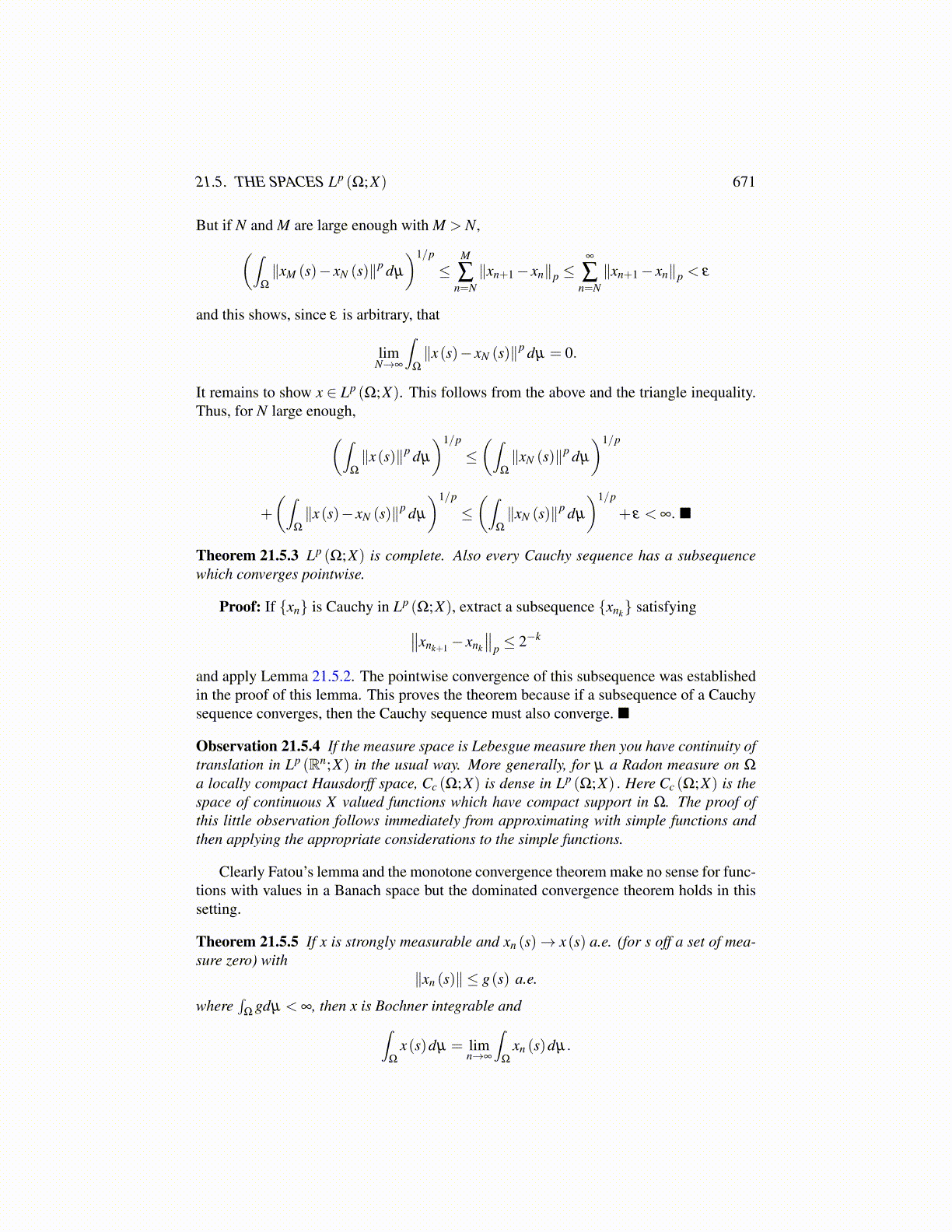
21.5. THE SPACES Lp (Ω;X) 671
But if N and M are large enough with M > N,(∫Ω
∥xM (s)− xN (s)∥p dµ
)1/p
≤M
∑n=N∥xn+1− xn∥p ≤
∞
∑n=N∥xn+1− xn∥p < ε
and this shows, since ε is arbitrary, that
limN→∞
∫Ω
∥x(s)− xN (s)∥p dµ = 0.
It remains to show x ∈ Lp (Ω;X). This follows from the above and the triangle inequality.Thus, for N large enough,(∫
Ω
∥x(s)∥p dµ
)1/p
≤(∫
Ω
∥xN (s)∥p dµ
)1/p
+
(∫Ω
∥x(s)− xN (s)∥p dµ
)1/p
≤(∫
Ω
∥xN (s)∥p dµ
)1/p
+ ε < ∞.
Theorem 21.5.3 Lp (Ω;X) is complete. Also every Cauchy sequence has a subsequencewhich converges pointwise.
Proof: If {xn} is Cauchy in Lp (Ω;X), extract a subsequence {xnk} satisfying∥∥xnk+1 − xnk
∥∥p ≤ 2−k
and apply Lemma 21.5.2. The pointwise convergence of this subsequence was establishedin the proof of this lemma. This proves the theorem because if a subsequence of a Cauchysequence converges, then the Cauchy sequence must also converge.
Observation 21.5.4 If the measure space is Lebesgue measure then you have continuity oftranslation in Lp (Rn;X) in the usual way. More generally, for µ a Radon measure on Ω
a locally compact Hausdorff space, Cc (Ω;X) is dense in Lp (Ω;X) . Here Cc (Ω;X) is thespace of continuous X valued functions which have compact support in Ω. The proof ofthis little observation follows immediately from approximating with simple functions andthen applying the appropriate considerations to the simple functions.
Clearly Fatou’s lemma and the monotone convergence theorem make no sense for func-tions with values in a Banach space but the dominated convergence theorem holds in thissetting.
Theorem 21.5.5 If x is strongly measurable and xn (s)→ x(s) a.e. (for s off a set of mea-sure zero) with
∥xn (s)∥ ≤ g(s) a.e.
where∫
Ωgdµ < ∞, then x is Bochner integrable and∫
Ω
x(s)dµ = limn→∞
∫Ω
xn (s)dµ.